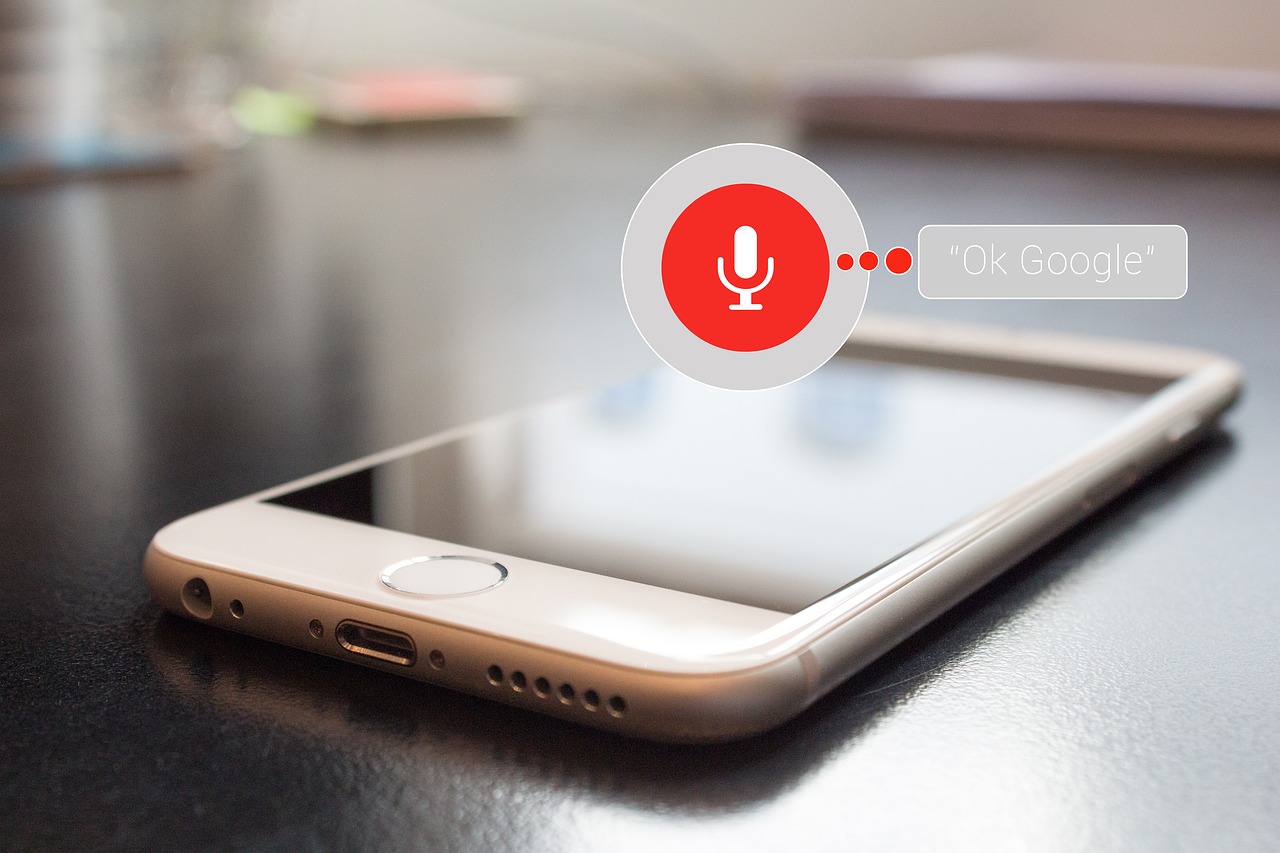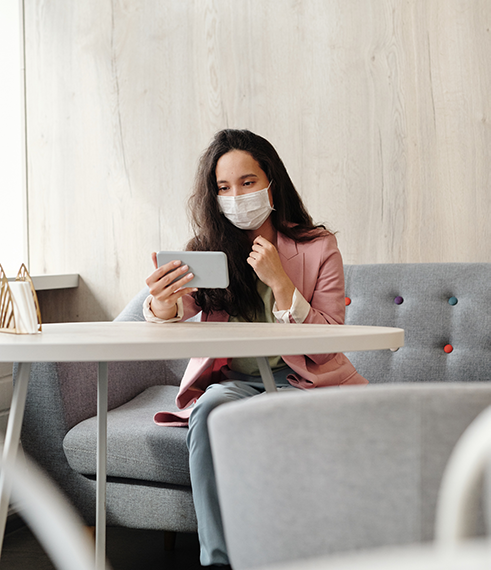5 Innovative COVID-19 Era Healthcare Technologies That Will Outlive the Pandemic
Some of the adjustments we've made in the era of COVID-19 have become familiar. It's hard to imagine at this point, for instance, that there was a time when we didn't know what a ZOOM call was. In fact, it's now a fairly ubiquitous executive conceit to "prep" the home-office (or rec room) background when attending a ZOOM meeting with colleagues.
Millennia looked at some healthcare technologies that emerged out of necessity during the pandemic, and named a few that rose above "mere emergency use" or "gimmick" to the kinds of tech they feel proved their worth and will endure, strengthening in effectiveness beyond the age of COVID and ZOOM calls. As they put it so well, "In other words, some aspects of the new normal could be providing a better experience than the old normal."

A virtual doctor's appointment -- Telehealth -- for instance, is now familiar to most people and lauded for its ability to connect otherwise logistically-difficult doctors and their patients.
Here is Millennia's list:
1. Voice Assistants
A voice assistant uses voice recognition, speech synthesis, and natural language processing to provide a service through an application. It can perform tasks or services based on commands or questions. Some commonly known voice assistants are Amazon’s Alexa, Apple’s Siri, Google Home and Assistant, and Microsoft Cortana.
For inpatient care, voice assistants are used to answer patient questions and perform tasks. Here are a few examples of patient requests using a voice assistant:
- Change the TV channel to NBC.
- Tell my nurse I need to use the restroom.
- When will my doctor be here?
- What’s for lunch today?
- What are my diet restrictions today?

Why will it outlive COVID-19?
The use of voice assistants in healthcare has grown during the pandemic in order to help healthcare facilities scale without needing additional resources. Once the pandemic is over, healthcare and patients will continue to benefit from this technology though. Patients will enjoy the ability to access information and control their environment without needing to wait for staff. Overall, a voice assistant can help provide a better patient experience. But that’s not all. Even without a global health crisis, medical staff are often stretched to serve patients. The ability to scale more easily by relying on voice assistants to handle the small requests will continue to be a relief for healthcare organizations and staff.
2. Telehealth
Telehealth, also referred to as virtual care or telemedicine, is the delivery of health care, health education, and health information services via phone or video technology. Basically, it facilitates patient appointments, meetings between specialists, and provider trainings remotely rather than in the office. It also includes services that enable at-home testing like Everlywell.
Why will it outlive COVID-19?

Telehealth was available prior to the pandemic, but its use has skyrocketed these last few months in order to support socially distanced healthcare. Although prior to COVID-19 adoption of telehealth was slow, we suspect that once healthcare facilities and patients have experienced its benefits there will be no turning back.
From a patient perspective, telehealth appointments offer benefits similar to working from home, including convenience and greater flexibility. For healthcare facilities, telehealth can provide similar benefits, as well as the ability to connect more easily to specialists and experts from different areas in order to provide better care.
3. Robots
A robot is simply a machine that can be programmed to complete tasks automatically. In healthcare, robots have been used in a variety of ways during the pandemic to help serve patients, alleviate staff, and provide a safe healthcare experience. Here are a few examples:
- A robot took an infected patient’s vitals at Providence Regional Medical Center
- A robot named Little Peanut delivers food to patients
- A variety of robots are disinfecting the air and surfaces in patient rooms and other areas of hospitals
- Robots are being used as companions to help patients deal with isolation

Why will it outlive COVID-19?
Many of these solutions have the ability to help healthcare outside the context of a pandemic. Whether improving efficiencies, adding safety measures, or providing additional care, robots have proven to have a place in healthcare, and we expect to see even more innovations in their use post-COVID-19.
4. Artificial Intelligence
Artificial intelligence (AI) uses complex algorithms and software to demonstrate intelligence via machines. In healthcare, AI can be used to emulate humans in the analysis, interpretation, and comprehension of complex medical and healthcare data. AI has been used in a variety of ways through the pandemic, including:

- Epic’s AI predicts when COVID-19 patients will become critically ill by analyzing health care records
- Qventus’s algorithm projects med-surge and ICU bed demand to help hospitals better manage resources
- BarabasiLab used machine learning and network science to identify potential drug candidates for the virus in less than 10 days
- Johns Hopkins is using machine learning to predict heart damage in COVID-19 victims
- The University of Chicago Medical Center is using AI to predict various patient outcomes
Why will it outlive COVID-19?
AI was providing a variety of innovations to healthcare before COVID-19 hit. However, the pandemic has resulted in pushing this technology further faster. The way AI is being used during the pandemic certainly has applications in a post-COVID world. Using AI to examine health records and predict potential issues is certainly beneficial and can be used to help medical staff identify broader trends and pinpoint issues in patent records.
5. Virtual Patient Waiting Room
Virtual patient waiting rooms let patients check-in and wait for appointments remotely without having to be physically present in the care facility or hospital.
Also referred to as mobile waiting rooms, zero-contact waiting rooms, and curbside check-in, virtual patient waiting rooms make use of smartphone technology to facilitate the patient check-in tasks that typically happen in an office. This includes getting patients into the queue, completing paperwork, and making payments.

Why will it outlive COVID-19?
In addition to minimizing risk with social distancing, virtual patient waiting rooms offer patients convenience and transparency. With virtual patient waiting rooms, patients are updated on their wait time, can wait nearby in a place of their choosing, and have more freedom to spend their wait how they want. Surely, some patients may prefer an in-person wait, but we suspect others will enjoy the freedom of waiting virtually, especially during cold and flu season. Providing patients with self-check-in and the option of where they wait is another way to personalize the patient experience.
It is clear that technology is the future of healthcare. While the list above pertains to the patient's health, we would be remiss to not point out a specific outcome: the creation of data and the need for that data to integrate seamlessly into their systems. This is where AI has become prominent, as it has the capability to transform the information into useful data -- or in the case of revenue cycle, AI electronifies paper-based documents like EOBs/EOPs. The end result is that healthcare providers are able to spend more time focused on their patient, and technology is able to ensure the back-end operations run efficiently.